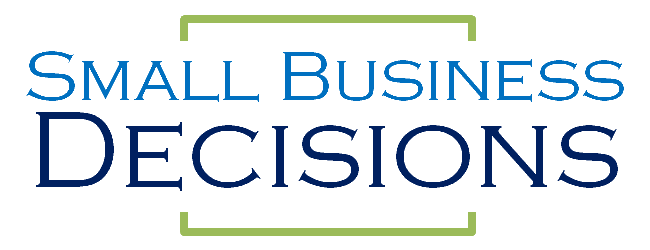Variable costs are anything in your business which grows proportionally with revenue. Fixed costs are the rest which are not impacted by changes in revenue. It’s important to realize that this is not the same as direct and indirect costs. You can have direct costs which end up being mostly variable, but partially fixed and you can have indirect overhead costs which end up being largely variable.
It is important to understand when to use variable cost analysis and when not to use it. Variable cost analysis is best used when determining the profitability of a specific product line. It is also quite powerful in forecasting for the future when you’re trying to understand potential growth or analyze profit potential of a marketing initiative. However, variable costing does not help you appropriately allocate overhead costs when it comes to reporting. In reporting, you need to use Generally Accepted Accounting Principles (GAAP) which is not a topic I’m well versed in. See Financial vs Managerial Accounting for more background information. In GAAP, your CPA would potentially use Adsorption Costing to allocate overhead or any number of other costing approaches which may be required or beneficial in your situation.
One common failure in business decision making would be to only use direct costs when analyzing profitability impacts of additional sales. This would understate the expenses associated with increasing revenue. Analysis with understated costs would either cause you to make a decision to invest when you should not have invested or set incorrect expectations for growth in profit and cash flow.
The 5 Sentence Splash
For variable costing, we start with sales and the costs incurred during that period of sales. We then use linear regression to determine which portion of the cost varies proportionally with changes in sales revenue. The varying portion is the variable cost. The rest of the costs become fixed costs because they are not impacted by changes in sales and are at a fixed level throughout the period analyzed. The fixed cost in dollars and the variable cost in percentage of sales can then be used to analyze the impact of potential changes in sales volume.
Roll Up Your Sleeves
I’ve seen lots of ways to calculate variable cost around the Inter-webs, only two of which I agree with, and one of which I prefer. The two accepted methods are Hi-Low Analysis and Linear Regression. If you want to get into more complicated forms of variable cost modeling, I’d also consider that agreeable. In this template, we’ll be using the Linear Regression method since it is typically more accurate than Hi-Low Analysis.
Variable and Fixed Cost Calculator Download
Profit and Loss
Enter your sales, your Direct Costs (aka COGS) and your total business expenses into the template.

In the sample data set, Direct Costs were 53% of sales and entering the rest of the expenses revealed that a portion of indirect expenses were correlated with revenue, bringing the actual variable cost to 61%. This is important because it illustrates that if I had done some of the sample analysis with only direct costs, I’d be overstating profit by 8%. That’s larger than some businesses’ actual profit margin. Yikes!
The Fixed Cost is the portion of the business that we don’t expect to change when sales change. This is important to understand because it should be included in any forecast of full company spend.
Using Variable Cost in Analysis
I included a sample of how to use Variable Costs in the analysis of incremental business in the template. The most direct example is when you are doing a marketing program to increase the sales of an existing product. In this case, your variable and fixed costs will be nearly identical to your existing business.

You can see that if we spend $9,000 on marketing over three months we have an estimated incremental increase in general sales over an 8 Month period. The quick simulation shows that we should recover our marketing expenses and have ~$51k in incremental profit. Keep in mind that this analysis is for a general marketing, not getting into product-specific marketing and incremental sales of specific products. A mechanic shop which advertises free vehicle inspections could use this since it won’t necessarily change their sales mix.
Using Fixed Cost in Analysis
Including fixed costs in your analysis is as simple as understanding when it is appropriate to include. It is appropriate to include full fixed costs when you’re estimating the overall business bottom line. It is not appropriate to include in incremental business analysis or individual product analysis. There are lots of different ways to include fixed costs into incremental business via allocation, but that is a common misnomer in terms of understanding if an incremental sale of a product provides more money to your bottom line. In some cases, you would allocate this fixed cost over new business as a separate exercise, but it should not be a factor in deciding whether to do the business, or whether the marginal business is profitable.
Some owners would argue from a strategic point of view that every product must cover it’s allocated fixed overhead. I don’t really disagree, but that is an entirely different discussion for another blog post. The truth is that if fixed costs are truly fixed, an incremental sale will not change those costs and will only incur it’s variable cost to the business.


